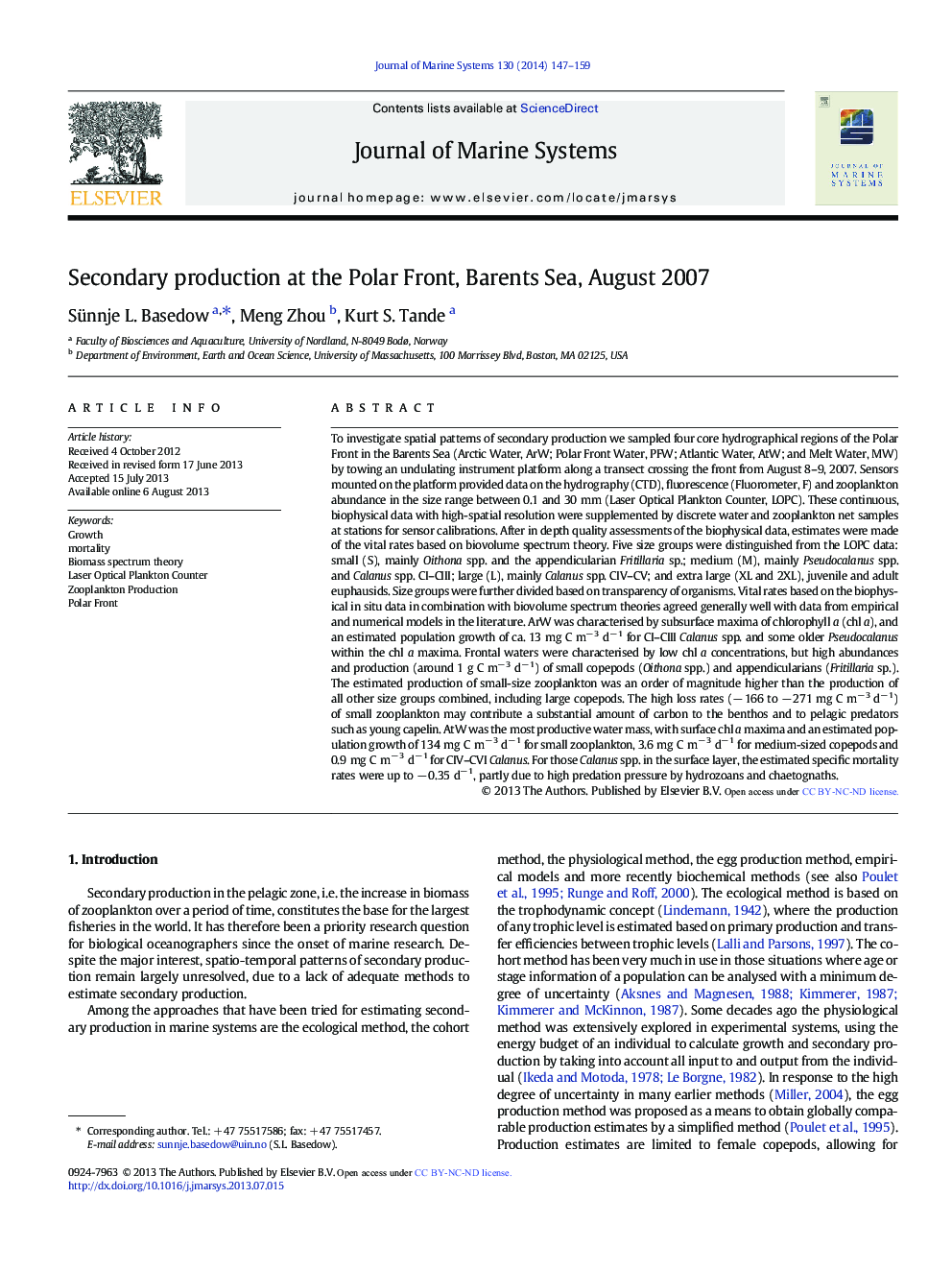| کد مقاله | کد نشریه | سال انتشار | مقاله انگلیسی | نسخه تمام متن |
|---|---|---|---|---|
| 6387061 | 1627299 | 2014 | 13 صفحه PDF | دانلود رایگان |
- High-resolution estimates of secondary production at the Polar Front are presented.
- Vital rates based on biovolume spectrum theories agreed well with literature values.
- The Polar Front had low chl concentration, but high production of small zooplankton.
- Small zooplankton production was 10Â Ã higher than of all other size groups combined.
- Increased mortality of â 0.35 dâ 1 was estimated for older Calanus in Atlantic Water.
To investigate spatial patterns of secondary production we sampled four core hydrographical regions of the Polar Front in the Barents Sea (Arctic Water, ArW; Polar Front Water, PFW; Atlantic Water, AtW; and Melt Water, MW) by towing an undulating instrument platform along a transect crossing the front from August 8-9, 2007. Sensors mounted on the platform provided data on the hydrography (CTD), fluorescence (Fluorometer, F) and zooplankton abundance in the size range between 0.1 and 30 mm (Laser Optical Plankton Counter, LOPC). These continuous, biophysical data with high-spatial resolution were supplemented by discrete water and zooplankton net samples at stations for sensor calibrations. After in depth quality assessments of the biophysical data, estimates were made of the vital rates based on biovolume spectrum theory. Five size groups were distinguished from the LOPC data: small (S), mainly Oithona spp. and the appendicularian Fritillaria sp.; medium (M), mainly Pseudocalanus spp. and Calanus spp. CI-CIII; large (L), mainly Calanus spp. CIV-CV; and extra large (XL and 2XL), juvenile and adult euphausids. Size groups were further divided based on transparency of organisms. Vital rates based on the biophysical in situ data in combination with biovolume spectrum theories agreed generally well with data from empirical and numerical models in the literature. ArW was characterised by subsurface maxima of chlorophyll a (chl a), and an estimated population growth of ca. 13 mg C mâ 3 dâ 1 for CI-CIII Calanus spp. and some older Pseudocalanus within the chl a maxima. Frontal waters were characterised by low chl a concentrations, but high abundances and production (around 1 g C mâ 3 dâ 1) of small copepods (Oithona spp.) and appendicularians (Fritillaria sp.). The estimated production of small-size zooplankton was an order of magnitude higher than the production of all other size groups combined, including large copepods. The high loss rates (â 166 to â 271 mg C mâ 3 dâ 1) of small zooplankton may contribute a substantial amount of carbon to the benthos and to pelagic predators such as young capelin. AtW was the most productive water mass, with surface chl a maxima and an estimated population growth of 134 mg C mâ 3 dâ 1 for small zooplankton, 3.6 mg C mâ 3 dâ 1 for medium-sized copepods and 0.9 mg C mâ 3 dâ 1 for CIV-CVI Calanus. For those Calanus spp. in the surface layer, the estimated specific mortality rates were up to â 0.35 dâ 1, partly due to high predation pressure by hydrozoans and chaetognaths.
Journal: Journal of Marine Systems - Volume 130, February 2014, Pages 147-159
